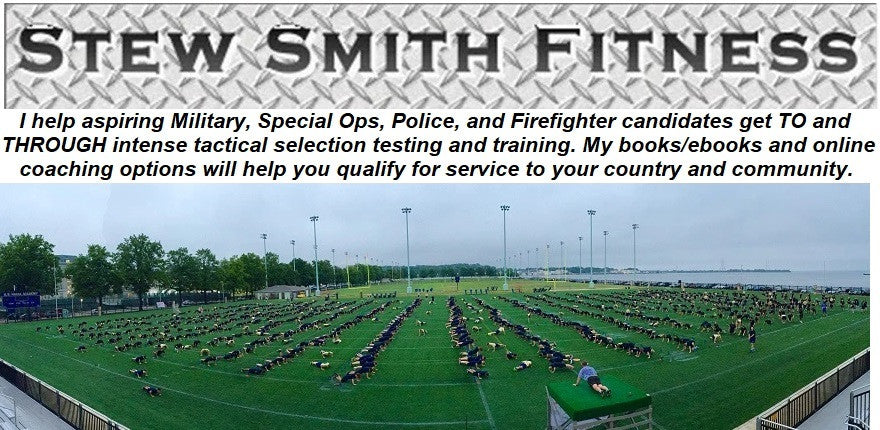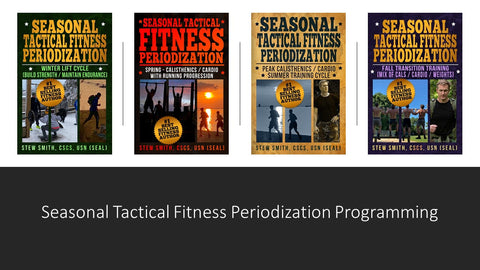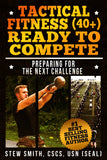How Many MIles Per Week of Running Should I Be Doing Prior to BUD/S / other Spec Ops Selections?

I get asked this question so often but I have not written an article about the answer because there is no one size fits all on this answer. The range of anywhere from 25-40 miles is logical BUT it depends on many factors. Many have called this journey into special ops a "running man's game."
You will be running a lot in any military spec ops selection program. Preparing for such volume is key, but there is no one answer that fits all situations. Look at the areas below that determine how to build your running program steadily and logically so you can progress without overuse injury and exceed the standards in front of you.

OPINION: This is such a common question I thought it needed answering, but instead of saying a generic number that applies to every athlete like '40 miles a week', the best answer is IT DEPENDS on the following:
Athletic History - Does your athletic history make you a strength athlete, a running athlete, swimming athlete, sprint or endurance athlete, or some type of hybrid athlete? Each will have a different journey when it comes to running progressions. There is no one size fits all. Some athletes have to start from ground zero and some need to cut their miles and half and focus on other weaknesses. The one common answer that fits all athletes is DO NOT JUST START RUNNING WITH A 20 MILE WEEK ON YOUR FIRST WEEK OF RUNNING. (This running plan requires weeks to build up to for most)
GROUND ZERO - WEEK 1 - Beginner running should start out at 5-10 miles per week. The low end is for heavier beginning runners and the higher end is for lighter beginning runners. Running every OTHER day may be needed at first depending on age, weight, and abilities. See Beginner Run Plan Ideas (See either Beginner or Intermediate Level Charts)

Where Running Athletes Go Wrong - Keeping your running up at the 50-70 miles a week is not necessary and it will produce continued athletic weaknesses in the form of body mass too low, strength not sufficient enough, and time wasted not swimming, PTing, and lifting (other typical weaknesses of long distance running athletes). Believe it or not, many high mile runners fail BUD/S 4 mile timed runs due to the lack of speed needed to meet the standards each weekly 4 mile timed run. Pace matters - make your running miles count by striving for the standards with each run.

Age / Injury History - Younger runners and athletes new to longer distance running get injured the most. When bones are still growing shin splints easily occur just as easily as the older athlete who is just starting running. If you have chronic feet, shin, and knee tendonitis, you are likely overdoing the running and need more non-impact cardio for the short term to maintain cardio base but give the bones and tendons a rest from the impact of running too much too soon.

Current Abilities - If you are currently running at 10 miles per week on your own and you start a new running plan that has you do 20-miles in the first week -STOP! It should take you 5-6 weeks to build up to 20 miles a week running plan so be patient and progress from 10-20 miles a week. Do not just jump into a plan that double or triples your current weekly mileage.
Height and Weight - Athletes over 200lbs will have a harder time than athletes under 170lbs when it comes to running. Impact pain, pacing drills, and faster times all hit harder for the heavier runner. The heavier runner may also want to use the triathlete model where 2/3 of the total cardio per week is nonimpact cardio. You can still build up to 25-30 miles a week, but during that process, significant time was also spent biking, rowing, stair stepping, and swimming to increase aerobic base BUT without the impact of too many miles on a body that may not be ready for such volume just yet. A lighter athlete could run more miles per week if preferred and not have the same issues as typical heavier runners.

Running / Cardio Base Training - Building a running / aerobic base is key to all endurance events. Running coaches will prefer their running athletes to increase volume steadily over time with many LSD runs and high miles running weeks. Some athletes are not built for that volume and can replace many of the LSD runs with bike, elliptical, stair stepper, rower, and swimming options and work the heart and lungs significantly without the beating of their legs. Depending on the current level, weight, and type of athlete, you may want to utilize the triathlete approach and use 2/3 of all cardio per week as non-impact options and 1/3 of it running. That is still A LOT of cardio that will help you build your aerobic base without the pain of longer miles and just getting good at running slowly.
Running Performance (Timed Runs) - Your runs should have meaning. Run with a purpose. If you are running goal pace, work hard to learn how to run at that 6-7 minute mile pace. Sure you can run a slow mile here or there, but 95+ percent of all runs need to be with a purpose of your intended goal - getting THROUGH Selection and crushing timed runs at NOT a gut check pace.

Rucking / Load Bearing Ability - This is where the strength athlete can shine as long as they can handle the impact pains of running / rucking. Lighter runners may need to spend some time (Lift Cycles) lifting and running less to build some needed strength to handle the loads. Dead lifts, squats, hang cleans, KB swings and farmer walks are all great ways to build strength if needed. This is usually the number one reason (besides more swim time) that running athletes need to reduce the total miles of running they typically did prior to preparing for Spec Ops training. Work on three paces with rucking (walk, power walk, and shuffle pace) - progress each few weeks with added weight as well.

Running Options (Sprints, Goal Pace, Hills, Sand, Long Slow Distance) - Diversify your running training and find places other than concrete to run on as it is easier on the joints and bones during higher running progressions. Some days can be fast or set at a goal pace for timed runs. Some runs can be done with greater efforts on the hills or sand, and some can be longer and slower pace with or without added weight. Personally, I keep the runs fast up to 5-6 miles and replace any greater distances with rucking working on three basic paces.
Non-Running Cardio Options (Non-Impact Cardio Base) - The beauty about BUD/S and other diving related spec ops programs is that swimming is a major part of the testing, training, and preparation. It is also a great non-impact cardio option to reduce running miles each week. Adding in some high resistance bike and stair stepper training on leg days for another tough leg day but non-impact cardio option each week to help you reduce impact miles as well. The triathlete training model works to reduce total volume miles of running and build the necessary aerobic base needed for this type of endurance training.

The IDEAL ANSWER
Take a few weeks to progress to 10 miles a week is you are starting to run from ground zero. But also, take time to progress from 10 miles a week to 30 miles a week. This should take 3-4 months if you do it on a 10-15% progression each week which will hopefully avoid typical running injuries. During that time, focus on 6 minute mile pace for short timed runs (1.5-3 miles - Navy, AF, Army, and USMC) and 7 minute pace for longer timed runs (4-6 miles) for various selection timed events. (BUD/S, Ranger, SF Selection).
Spend significant time doing non-impact cardio as well to improve swimming, but to also reduce total volume of impact miles on feet, shins, knees, and hips. If you spend 2/3 of your cardio each week in the nonimpact zone, you can build and improve your aerobic base without having to do several LONG SLOW DISTANCE (LSD) runs each month.
To be honest, the range for all athletes seeking these jobs needs to not only be in the 25+ range for running with an addition 5-10 miles rucking for a total of 30-35 miles per week, but the speed needs to be a focused 6-7 minute mile pace depending on the distance.
Rucking and Swimming With Fins
Add resistance to your running and add weight by rucking, but also adding SCUBA fins to your swimming on your leg days each week. Having a strength foundation will help you manage the added weight of rucks and the added resistance of swimming with fins. Make sure you top off all leg days with a ruck and/or a swim with fins (depending what is required of you in selection). You may want to add in a few LSD rucks however as getting used to having a back pack on for many hours is part of the gut check that is Army / USMC Selection processes. One option is to do a 1/2 marathon running plan, and replace any run over 9 miles with a ruck of that distance (once you have built up to that distance by rucking progression two times a week. See Rules for Rucking Progression.
There is More To StewSmithFitness.com than You May Know
(In fact, there are more than 40 books, 1000+ articles, online coaching - and more)

Who is Stew Smith CSCS? Coach, Trainer, Writer, Podcaster: I'm the former Navy SEAL that tactical candidates go to for books, ebooks and online coaching to prepare themselves to get to and through intense tactical assessment and selection programs and qualify for service in their chosen tactical profession. See More at StewSmithFitness.com
Where to Find More Information About Optimal Performance Training Programs
When you start training again, consider the seasonal tactical fitness model. I call it A WAY to train and obviously not the only way to train. But it offers the opportunity to never neglect your weaknesses, helps with flexibility and mobility, but will also put you at a level of physical abilities where you are happy with your overall ability to do just about anything. We have a system where the seasons dictate our training. When it is nicer outside, we tend to run and do more calisthenics. When it is colder and not so nice, we lift more, run less, and still maintain our outdoor activities with shorter runs and rucks. Check it out: Seasonal Tactical Fitness Periodization System.
These Seasonal Tactical Fitness BLOCK Periodization programs will walk you through 4 x 4 weeks cycles with 16 weeks of each season in two programs. (32 total weeks)

Increase Strength & Crush the PST / PAST
3 Weeks Strength - 1 Week PT / Cardio Focus
(16 weeks)
These programs will walk you through 4 cycles with 12 weeks of each season in two programs.
The Specific Military / Special Ops Physical Fitness Workouts

Navy SEAL Workout Phase 1
Navy SEAL Workout Phase 2 - 3
Navy SEAL Workout Phase 4 Grinder PT
Navy SWCC Workout
Army / Air Force Advanced Fitness / Special Ops
Army PFT Workout (Prep For Rucking, OPAT, ACFT)
Army Special Forces / Ranger Workout
Army Air Assault School Workout
Army Airborne Workout
Air Force Special Warfare IFT / OFT / Selection Prep



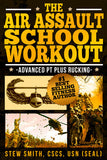
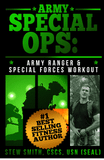


Advanced Running Program - Special Ops Supplement Plan
USMC RECON / MarSOC Workout
USMC OCS / TBS Workout
USMC IST and PFT
The Combat Conditioning Workout
Air Force PJ / CCT Workout Battlefield Airman Prep Course
The UBRR Upper Body Round Robin Workout / Spec Ops version
The Coast Guard Rescue Swimmer / Navy SAR Workout
The Service Academy Workout (West Point, Navy, Air Force Academy)
The Navy, Air Force, Marine Corp Boot Camp Workout
The Law Enforcement Physical Fitness Workouts
The FBI Academy Workout | FBI Workout Vol 2
The DEA Workout
The FLETC Workout - Ace the PEB
The PFT Bible: Pushups, Sit-ups, 1.5 Mile Run
The Fire Fighter Workout - Ace the CPAT
Beginner / Intermediate / Advanced Fitness Guides
The Beginner / Intermediate Guide to Fitness
Reclaim Your Life Erin O'Neill Story (beginner / intermediate)
Veterans Fitness Baby Boomer and a Flat Stomach
Circuit Training 101 Beginner / Intermediate Guide to the Gym
The Busy Executive Workout Routine
The Obstacle Course Workout Prep for Races or Mil, LE, FF
TRX / Military Style Workouts Adding TRX to Military Prep Workouts
Tactical Fitness Over 40 Series
Tactical Fitness (40+) Phase 1, Phase 2, Phase 3, Phase 4
Online Coaching Options
Online PT CLUB - Weekly Workouts created personally for you.
New Member's Only Content / Services Program!
If you want access to years worth of workouts, many of the top eBOOKs, favorite workouts of the week, free fitness APP, closed Facebook Group, video / picture library of exercises, and more access to LIVE Q/A sessions check out the Stew Smith Fitness Members Section.
The dashboard below has the links to all the information, archives, videos, and links to workouts, podcasts, live Q and A lessons.
Consider this! - A Membership Program and Gain Access to Exclusive Content
(click for Fitness Club Dashboard - members only)
Questions? Just email - Stew@StewSmith.com
At StewSmith.com - List of Products and Services
- FREE Articles
- Podcasts and Swimming Videos (Youtube, TikTok, Instagram)
- eBooks
- Books and eBooks in PRINT
- Stew Smith Fitness Club membership site
- Online Coaching
Stew Smith Fitness
Find more about our programs on our social media:
Instagram TikTok Youtube
Stew Smith is a former Navy SEAL and fitness author certified as a Strength and Conditioning Specialist (CSCS) with the National Strength and Conditioning Association. Visit his Fitness store if you're looking to start a workout program to get you TO and THROUGH any tactical fitness training program OR create a healthy lifestyle. Send your fitness questions to stew@stewsmith.com.
